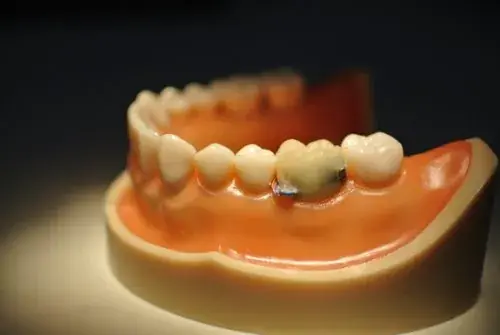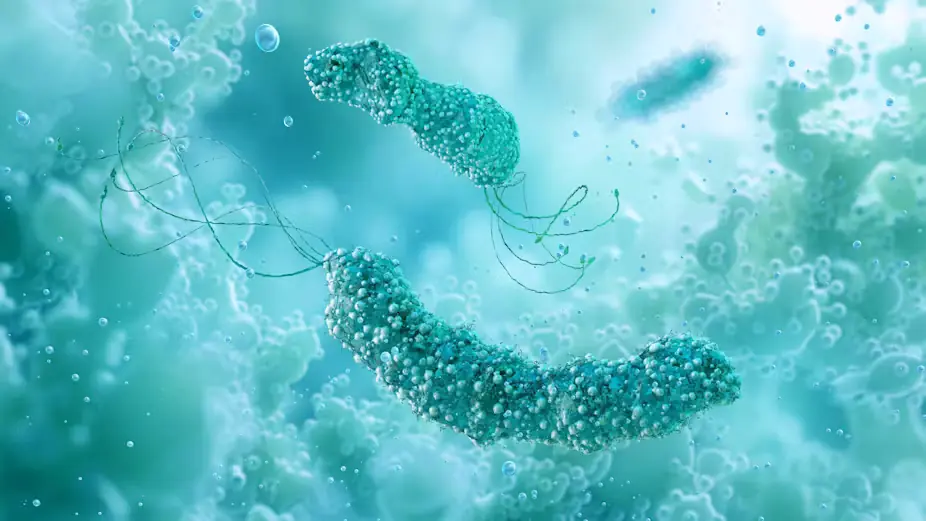
Why You Should Knock Three Times Before Entering a Hotel Room, Even When It's Vacant
Even with the hotel room empty, always knock three times before entering.

Revolutionary Bioengineered Smart Tooth Implant Could Change the Future of Dental Care
In a remarkable breakthrough, scientists at Tufts University have unveiled a bioengineered "smart" tooth implant that could redefine dental care. Unlike traditional dental implants, which are fixed into the jawbone and often fail to integrate with surrounding tissues, this new implant has the potential to seamlessly integrate with both gum tissue and nerve pathways.
How Does the Smart Tooth Implant Work?
According to ZEM Science, this cutting-edge dental implant uses a biodegradable nanofiber coating that is loaded with stem cells and a growth protein called FGF-2 (fibroblast growth factor 2). These components work together to encourage the regeneration of soft tissues and nerve connections around the implant. This process is crucial for the restoration of both the function and feel of the natural tooth, as traditional implants often fail to mimic the sensations and biological connections of a real tooth.
One of the most remarkable features of this implant is its insertion technique. Unlike traditional methods, which require drilling into the bone, this implant uses a press-fit technique. This minimizes trauma to the surrounding tissues and accelerates the healing process, allowing for quicker recovery and less post-surgical discomfort.
What Does This Mean for Dental Care?
The new implant’s ability to integrate naturally with the gum tissue and reconnect with nerve pathways offers promising implications for those who have lost teeth or need tooth replacements. The results from animal studies have shown that the implant remained stable and demonstrated early signs of forming biological bonds similar to those seen in natural teeth. This opens up the possibility of a more complete and natural restoration of both the appearance and function of the teeth.
While this innovative implant is not yet available for human use, the technology shows immense promise and could soon revolutionize how dental implants are designed and implemented.
Future Potential of Smart Tooth Implants
The success of this bioengineered implant could also extend beyond just cosmetic dental treatments. If proven effective in human trials, it may help individuals who have suffered from nerve damage in their mouth, offering not just a visual restoration, but also a functional one, improving sensation and reducing pain.
Moreover, the use of biodegradable nanofibers and stem cells could lead to further advancements in regenerative medicine, offering new possibilities for treating damaged tissues throughout the body.
Conclusion
The groundbreaking bioengineered smart tooth implant developed by Tufts University represents a significant advancement in dental technology. With the ability to integrate with both gum tissue and nerve pathways, this innovation could pave the way for future dental treatments that not only restore the look of your smile but also its function and natural feel. Though it is still in the experimental phase, this exciting development could be a game-changer for dental care in the years to come.
Sources:
ZEM Science
Tufts University Research Team

Even with the hotel room empty, always knock three times before entering.

Maximize Your Savings on Electricity: With the right usage, this simple trick can reduce your energy consumption by half, slashing your electricity bill each month.

Using your phone while in the bathroom may seem like a harmless habit, but experts warn that this seemingly innocent activity can lead to serious, long-term consequences. Find out why you might want to rethink your bathroom routine.

In traditional wisdom, the arrival of these animals in your home is seen as a sign of blessings, promising luck and abundance for the family.

When purchasing prepackaged foods marketed as "better for you," watch for hidden sugar, sodium, unhealthy oils, additives and more, a dietitian says.

Layne Horwich lives independently, found the lump herself and surprised doctors with her treatment choice. What older women should know about breast cancer risk.

A medic has revealed that a sign of serious heart condition could be spotted in your nails.

Who's most at risk of getting skin cancer and where on the body it can show up

Millennials were found to be hardest-hit in new anaylsis of data

Men should not hesitate to consult their doctors about any symptoms or concerns they have regarding their prostate health.

By understanding the causes, symptoms, and treatment options for urticaria, individuals can take proactive steps to manage the condition and prevent future outbreaks.

You may be tempted to take a cold shower this summer if you're looking for methods to chill down before bed, but an expert has cautioned against it.

Read on for telltale signs of the common eye disease that affects over-50s

Researchers have discovered that a protein from Helicobacter pylori, a bacteria linked to stomach ulcers, could block Alzheimer’s-related proteins and offer a new approach to neurodegenerative disease treatment. Learn how this breakthrough could change

Discover the health benefits of waking up before 7 AM, including improved sleep quality, better immunity, and enhanced emotional resilience. Learn how early risers boost productivity and reduce anxiety by following their circadian rhythm.

Learn about the unique cornea, its oxygen absorption from the air, and how wearing contact lenses can affect its health. Discover tips to maintain corneal transparency and clear vision.

BNT116, the world’s first lung canc3r vaccine developed by BioNTech, is now in clinical trials. Learn how this mRNA vaccine aims to target non-small cell lung canc3r and revolutionize canc3r treatment.

A new study shows that just 72 hours without a smartphone triggers significant changes in brain activity, especially in areas responsible for motivation and pleasure. Discover how smartphone detox affects your brain's reward system and craving levels.

Dandelion root extract (DRE) shows potential as a canc3r-fighting agent, with lab studies indicating its effectiveness in destr0ying canc3r cells and slowing tumor growth. Learn more about the research behind DRE and its benefits for various types of canc

Discover the true story of Welles Crowther, a young equities trader whose selfless heroism on September 11 saved countless lives—and became a lasting symbol of bravery.

Unlike chemical-based dyes, this DIY homemade hair dye doesn’t expose your hair to harsh chemicals, which can cause damage over time.

Vietnam veteran James Pack's heartwarming reunion with dogs Bailey & Blaze, made possible by PetSmart's kindness and community support after his heart attack. Celebrate their unbreakable bond!

Even with the hotel room empty, always knock three times before entering.

A father teaches his son about value with a 50-year-old Volkswagen Beetle. Read this inspiring story! ❤️🚗

Discover how Robin Williams used his fame and influence to help the homeless, hiring individuals on set, making anonymous donations, and showing kindness without seeking praise. A true act of selfless service.

From natural remedies to advanced treatments, incorporating Vaseline into your skincare routine can enhance the health and appearance of your skin.

Tanya's hands trembled as she gripped the kitchen counter, the words echoing in her skull like a de@th knell. "You're right, darling. There is a son... after all, you couldn't."

By incorporating coffee into your skincare routine through DIY face masks, scrubs, and oils, you can harness its full potential and enjoy youthful, glowing skin without harsh chemicals or expensive treatments.

Maximize Your Savings on Electricity: With the right usage, this simple trick can reduce your energy consumption by half, slashing your electricity bill each month.

On her wedding day, Serene’s fiancé disappears, leaving her in shock. When the truth behind his sudden disappearance unravels, secrets about his past and their relationship come to light—revealing a love story full of twists and mysteries.

Using your phone while in the bathroom may seem like a harmless habit, but experts warn that this seemingly innocent activity can lead to serious, long-term consequences. Find out why you might want to rethink your bathroom routine.

A kind gesture from a stranger led to a life-changing gift and an unexpected journey of kindness. Discover how Alena’s life was transformed by a mysterious man’s $50,000 legacy and the ripple effect it had on others.

In traditional wisdom, the arrival of these animals in your home is seen as a sign of blessings, promising luck and abundance for the family.

When purchasing prepackaged foods marketed as "better for you," watch for hidden sugar, sodium, unhealthy oils, additives and more, a dietitian says.

A wife tired of being taken for granted decides to walk away from her family for a while, forcing her husband to realize the true value of her work and the struggles of motherhood. This powerful story shows how sometimes, silence is the most powerful stat

Layne Horwich lives independently, found the lump herself and surprised doctors with her treatment choice. What older women should know about breast cancer risk.

Natural treatments like amla oil, curry leaves, onion juice, and castor oil can promote melanin production and improve hair health.

Esther Klein’s life of silent sacrifice was finally recognized during a cruise she’d never expected to change her life. Discover how the ship’s captain revealed her untold story, and the shocking twist that left everyone in awe.

A medic has revealed that a sign of serious heart condition could be spotted in your nails.